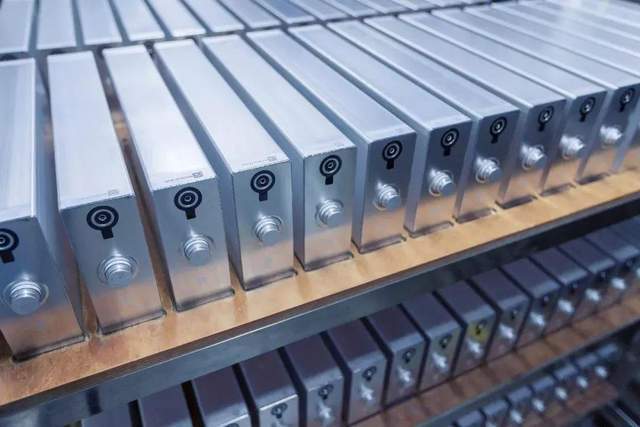
ਜਨਃ . 31, 2024 17:40 ਸੂਚੀ 'ਤੇ ਵਾਪਸ ਜਾਓ
European C&I Energy Storage Market
There are numerous reasons for optimism when it comes to the future growth of the commercial and industrial (C&I) energy storage market. With the surging popularity of renewable energy sources, the grid faces challenges of volatility and intermittence. This brings potential risks and operational concerns to the grid. However, energy storage systems (ESS) coupled with renewable energy can significantly contribute to grid stability, making it an appealing prospect for the C&I sector.
Another factor that drives the interest in energy storage is the occurrence of power outages caused by natural disasters and supply-demand imbalances. These events lead to substantial economic losses, and ESS can play a crucial role in providing backup power. Thus, there is an increased interest in implementing energy storage solutions to mitigate the impact of such events.
In Europe, the demand for electric vehicle (EV) charging infrastructure and renewable energy sources is on the rise. As a result, a growing portion of the costs to manage the network to accommodate these needs is being passed on to C&I electricity users in the form of demand charges. However, C&I battery storage could potentially lower electricity costs for facilities where they are installed and also help manage the overall cost of power for consumers.
One key player in the C&I energy storage market is ACDC. They have developed the PowerStack, a comprehensive solution with battery capacities ranging from 200kWh to 4MWh, suitable for applications lasting two to four hours. This innovative solution combines lithium-ion batteries, power conversion systems (PCS), energy management systems (EMS), and fire suppression systems (FSS), simplifying transportation, installation, and operation and maintenance (O&M) processes.
The PowerStack boasts advanced technologies, such as liquid cooling, which helps to reduce levelized cost of storage (LCOS) compared to traditional air cooling methods. It achieves this by maintaining a lower battery temperature difference, resulting in extended battery lifetimes and improved charging and discharging efficiencies. Additionally, features like automatic state of charge (SoC) calibration and an automated coolant refilling system substantially reduce operating and maintenance costs, providing further economic benefits.

Furthermore, the PowerStack places a strong emphasis on safety. It incorporates a comprehensive safety design at the cell, electrical, and system levels. AI-assisted cell monitoring technology enables high-precision online computing of cell status, providing early-stage warnings to prevent thermal runaway. The system also features multiple layers of overcurrent protection and anti-arc protection to mitigate electrical hazards. Additionally, proprietary pipe connectors, IP65 module design, one-way breather valves, and drip collectors ensure system safety across multiple aspects.
With its outstanding flexibility and performance, the liquid cooled ESS PowerStack is an ideal solution for various communities and facilities. As Europe prepares for growth in the C&I energy storage market, ACDC, as an early entrant in the sector, is excited about the opportunities to come. They are committed to maximizing customers' return on investment (ROI) by offering industry-leading products and services.
In conclusion, the future of the commercial and industrial energy storage market looks promising for several reasons. The integration of energy storage systems with renewable energy sources contributes to grid stability, mitigating risks and concerns related to volatility and intermittence. Additionally, energy storage solutions offer backup power in the event of natural disasters, reducing economic losses. Furthermore, in Europe, the increasing demand for EV charging infrastructure and renewable energy production is driving the need for C&I battery storage, which could lower electricity costs for facilities and consumers. ACDC, with their commitment to safety, is poised to play a significant role in this thriving market.
ਉਲੰਘਣਾ ਕਰਨ 'ਤੇ ਹਟਾ ਦਿੱਤਾ ਜਾਵੇਗਾ
Reference website:https://www.renewableenergymagazine.com
-
Wireless DC Charging: The Next Frontier in Contactless EV Power Delivery
ਖ਼ਬਰਾਂAug.04,2025
-
Hybrid BMS Energy Controls: Integrating Renewable Energy Sources
ਖ਼ਬਰਾਂAug.04,2025
-
Blockchain for Secure and Decentralized EMS Power Systems
ਖ਼ਬਰਾਂAug.04,2025
-
AI-Driven for Smart Grids: Energy Management System (EMS)
ਖ਼ਬਰਾਂAug.04,2025
-
Advanced Distribution Management System (ADMS) Energy
ਖ਼ਬਰਾਂAug.04,2025
-
5G-Enhanced BMS Energy Savings: Ultra-Low Latency Control
ਖ਼ਬਰਾਂAug.04,2025























